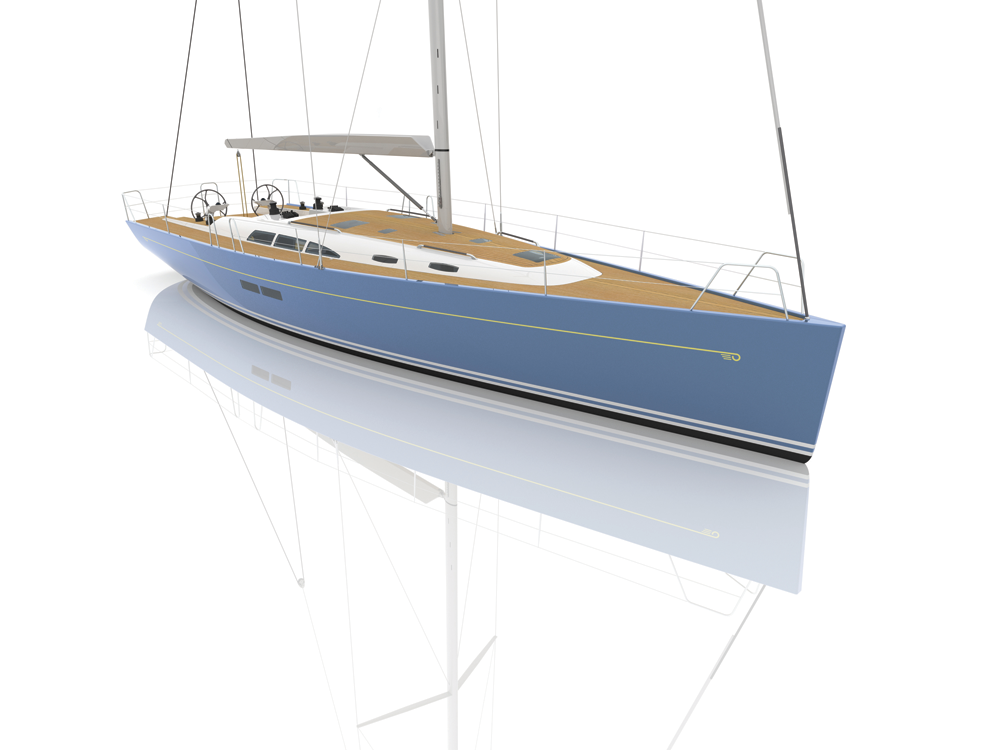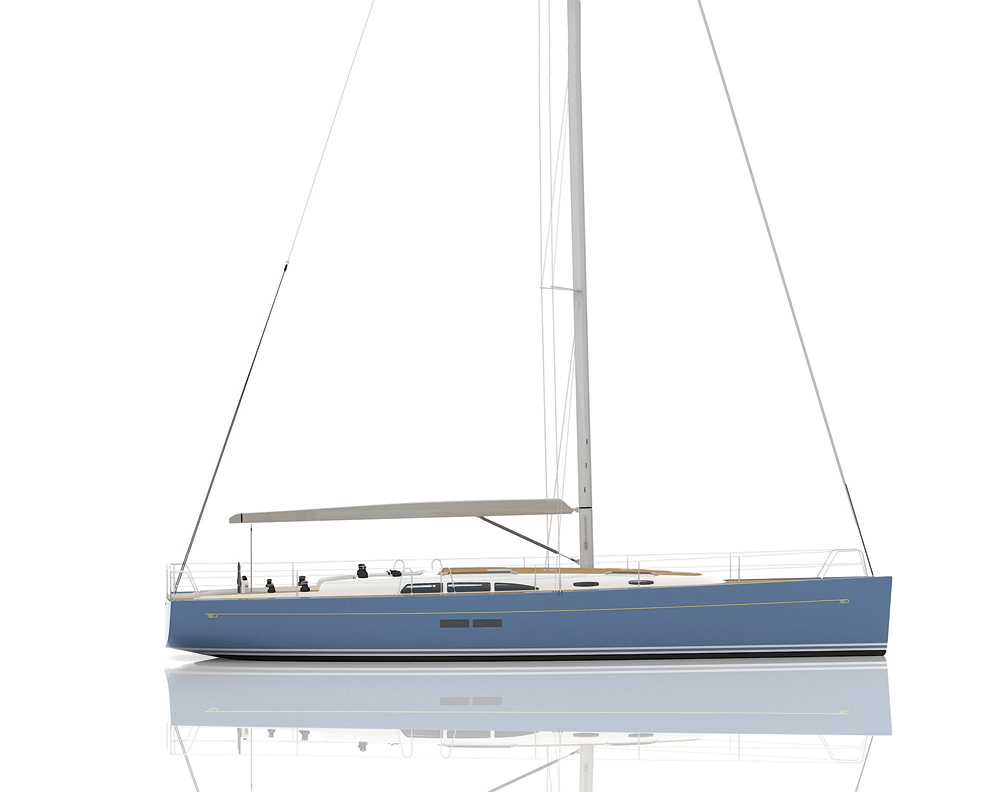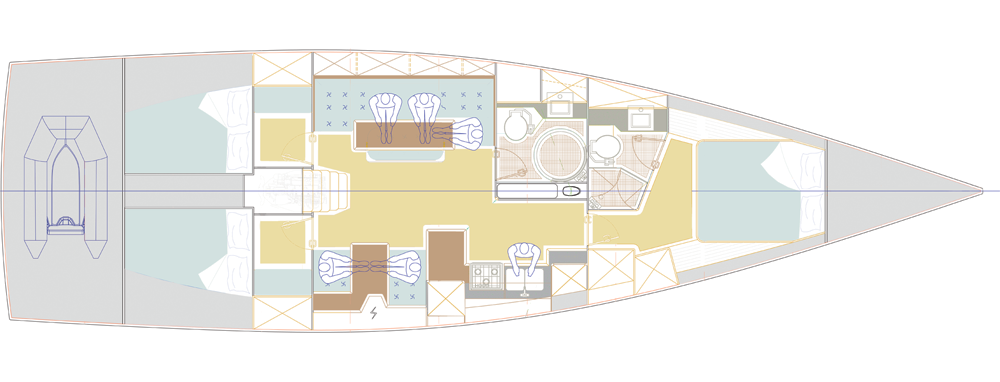Hinckley Bermuda 50
Aiming to be fast in IRC and ORR, this Tripp design also brings good looks to the table
Most of us have looked across the harbor at an incoming boat at some time and said, "Yup, must be Hinckley." The signs were hard to mistake. There were beautifully sculpted teak toerails and magnificent, big stainless steel bow fittings lapping down the stem. And there was the hull defined by graceful overhangs that gave the boat an ageless beauty, what I think of as the epitome of the American yacht.

Hinckley's new Bermuda 50, designed by Bill Tripp III, might not leap out at you immediately as a Hinckley. You are more likely to say, "Wow! What is that?"
Bill is dragging the Hinckley style into the 21st century. I wouldn't say "kicking and screaming," although some die-hard Hinckley fans might be moaning a bit. It was time for a change at Hinckley. You can't simply be building boats from another era while trying to find new buyers. I like the new Bermuda 50. In time people will say, "Yup, it's not 1959 anymore, that's the new Hinckley." Hinckley is looking to repeat the success of the Bermuda 40 launched in 1959. Bill III's dad, Bill Tripp, one of my boyhood heroes, designed that boat.
I suppose I could compare all the relative numbers for the old and new Tripp boats, but I'm not sure that would tell us much. But one number I'll call to your attention to is the DWL. The old Bermuda 40's DWL was 68% of its LOA. The new 50's DWL is 90% of the LOA. This design is aimed at offshore racing under IRC and ORR rules, and effective sailing length is very important. Nobody wants to give up DWL today. I favor graceful overhangs if you are going to compete against similar boats.

The beam is moderate with the L/B at 3.5. The D/L is 125. The old Bermuda 40 had a D/L of 426. Those numbers accurately reflect the importance of DWL today. The draft is 11 feet 6 inches with the daggerboard-style lifting keel down and 6 feet 6 inches with the keel retracted. The keel is a T-bulb type. There is only one rudder and it looks short in span, but I'm sure it has to be designed that way to work with the keel-up draft. The hull shape shows a firm turn to the bilge aft, then going quite flat across the centerline. This shape carries all the way to the forefoot with powerful U-shaped sections forward and no deadrise in sight.
The spacious interior layout has lots of elbowroom without the feeling that any components were crammed into the boat. The saloon is big with a settee to starboard and a dinette to port with an inboard seating island. There are two heads and they are both forward. One uses the keel trunk as its inboard bulkhead. This avoids the keel trunk intruding into the layout. You won't know the head is there.

The galley is a bit small, but you know me–I like big galleys. There is a centerline double berth forward with its own head and a large shower stall. With two mirror image spacious staterooms aft, both with double berths, this will be a very comfortable boat for three couples. The fo'c'sle is big. Note the dinghy garage in the stern. The SA/D is 30.64.
The deck plan shows an open cockpit with twin wheels and a mainsheet traveler right in front of the wheels on the cockpit sole. The sidedecks are broad and clear. The cabintrunk is trim and not overly styled. The sheerline is dead straight as far as I can measure. Bill's dad drew some of the best sheers ever. They were bold.
The new 50 will be built with all the newest materials and methods including an all carbon fiber hull and deck. The deck and cockpit areas will get a teak inlay. The auxiliary is a Nanni 4.6 with saildrive.
I very much look forward to taking a tour of a new Bermuda 50.
The Hinckley Company | 130 Shore Rd., Southwest Harbor, ME 04679
207-244-6602 | www.hinckleyyachts.com
Our best estimate of the sailaway price: $1,975,000

Comments